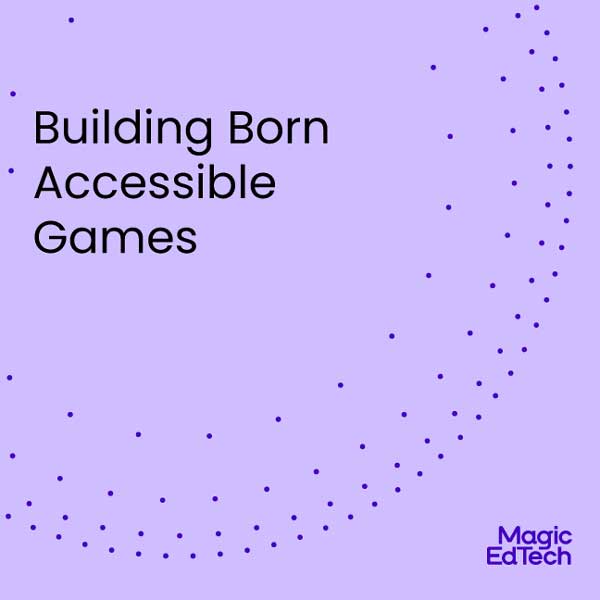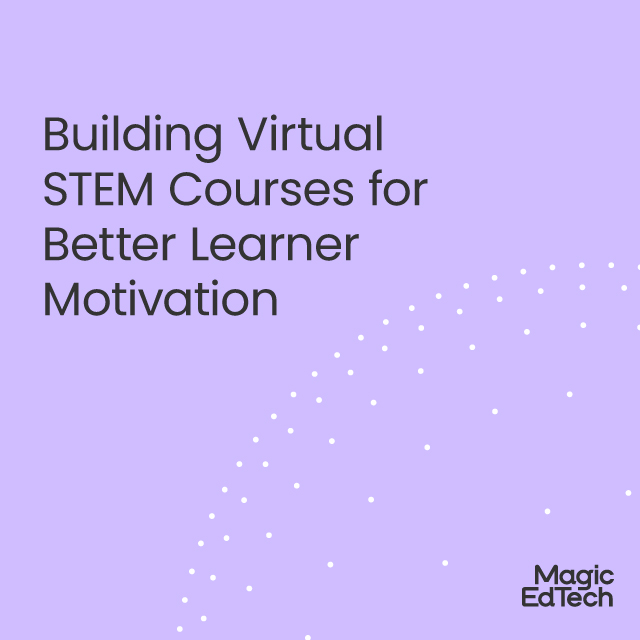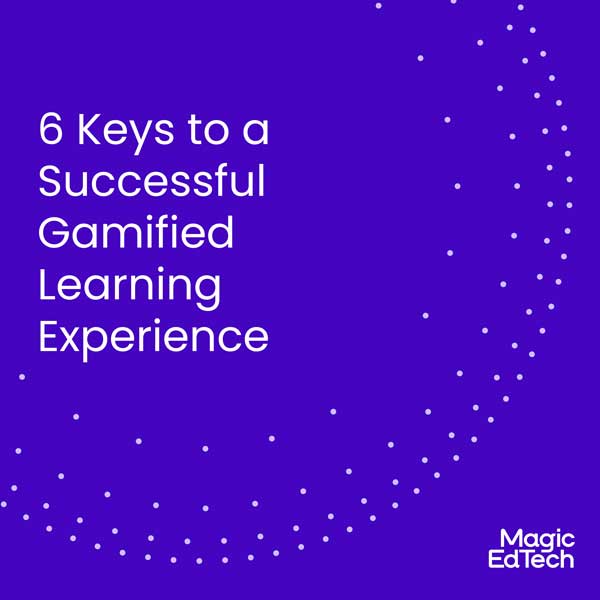Can After-School STEM Programs Be The Answer to Bridging the Industry-Academia Gap?
- 28 July, 2023
- Reading Time: 6 mins
“Nothing in life is to be feared, it is only to be understood.” – Marie Curie
In the present-day job market, STEM (Science, Technology, Engineering, and Mathematics) education has become a cornerstone for future career success. To meet the demands of the 21st-century workforce, students need to develop critical thinking, problem-solving, and collaboration skills. That’s where STEM Education Programs come into play.
After-school STEM programs play a crucial role in complementing traditional classroom learning and preparing students for the challenges of tomorrow. Schools are embracing STEM education programs to equip K-12 students with the necessary skills and knowledge.
Also, incorporating these programs is key for education publishers and school administrators seeking to enhance their students’ academic performance and career readiness.
Importance of Intensive STEM Education Programs for Schools
STEM education programs are of paramount importance to schools for various reasons. These programs focus on developing students’ skills and knowledge in Science, Technology, Engineering, and Mathematics, offering numerous benefits for their academic and future career success.
- Critical Thinking and Problem-Solving: STEM education fosters critical thinking and problem-solving skills, enabling students to identify and implement effective solutions for real-world challenges.
- Hands-on Learning and Creativity: STEM programs involve practical activities that nurture creativity and innovation as students explore through experimentation.
- Preparation for the Future: STEM skills are essential in our technology-driven world, preparing students for future job markets heavily reliant on technology and scientific advancements.
- Interdisciplinary Approach: STEM education integrates multiple disciplines, promoting a holistic understanding of interconnected subjects and their applications.
- Career Opportunities: STEM fields offer diverse and exciting career paths in engineering, computer science, medicine, research, and other thriving industries.
- Global Competitiveness: Excelling in STEM education enhances a country’s global competitiveness by fostering a skilled workforce and promoting innovation.
- Digital Literacy: STEM education equips students with the skills to confidently navigate technology and stay up-to-date in the ever-evolving digital landscape.
- Societal Progress: STEM education empowers students to address pressing global challenges like climate change, healthcare, and sustainable development, contributing to societal progress.
Why Schools Should Invest in STEM Education
STEM education programs are essential for schools to equip students with the skills and knowledge needed for their future success. Even finance-crunched schools should invest in STEM education to reap the benefits like:
- Long-Term Cost Savings: Though investing in STEM education may require initial resources, it can lead to long-term cost savings. Students with STEM skills are better prepared for the job market, reducing the need for remedial education and increasing their potential earning power.
- Grant Opportunities: Many organizations and governments offer grants and funding specifically for STEM education. Finance-crunched schools may find access to additional resources through such grants, making it more feasible to implement STEM programs.
- Community and Industry Support: Local communities and industries often recognize the importance of STEM education. Finance-crunched schools may receive support from these stakeholders, including donations, mentorship programs, and student internship opportunities.
- Addressing Workforce Demands: Investing in STEM education helps address workforce demands and bridge the skills gap in high-demand industries. This, in turn, benefits the local economy and opens doors for collaboration between schools and businesses.
Shifts in the Job Market Warranting a Greater Focus on STEM Education
- Technology Advancements: Rapid technological changes demand individuals with strong technical skills to develop and operate new technologies.
- Automation and AI: Automation and AI have reshaped job requirements, emphasizing problem-solving and critical thinking abilities.
- Data-Driven Decision Making: Data analytics is vital in various industries, creating a demand for data-savvy professionals with STEM skills.
- Emerging Industries: STEM fields drive emerging sectors like renewable energy, biotechnology, and cybersecurity, necessitating a strong STEM background.
- Global Challenges: STEM education equips students to tackle global challenges like climate change through research and technological solutions.
What Does An After-School Program Bring to STEM Course Development?
Developing a tailored STEM curriculum for K-12 education is crucial in equipping students with essential skills for the future. While the benefits of a strong STEM curriculum are well-known, the role of after-school programs in STEM course development deserves special attention.
After-school programs can significantly enhance the effectiveness and impact of the STEM curriculum in several ways:
- Extended Learning Time: After-school programs offer more time for STEM learning, allowing deeper exploration of concepts, hands-on projects, and topics beyond the regular curriculum.
- Enrichment and Reinforcement: After-school programs enhance the regular STEM curriculum with extra activities reinforcing key concepts, improving understanding and academic performance.
- Hands-On Experiments and Projects: After-school programs provide flexibility for hands-on experiments, fostering a deeper grasp of scientific principles and practical application of knowledge.
- Individualized Learning: Smaller classes in after-school programs enable a personalized STEM curriculum, catering to each student’s strengths and weaknesses for a more effective learning experience.
- Nurturing Curiosity and Passion: After-school programs fuel students’ curiosity for STEM by exploring topics beyond the curriculum, cultivating lasting interest in science, technology, engineering, and mathematics.
- Exposure to Advanced Concepts: After-school programs introduce advanced STEM concepts not covered during regular school hours, inspiring students to pursue higher-level studies in STEM fields.
- Partnerships with STEM Professionals: After-school programs collaborate with STEM professionals or industries, offering real-world experiences that broaden students’ understanding of STEM careers and applications.
- Project-Based Learning Opportunities: After-school programs enable project-based learning, enhancing problem-solving, teamwork, and creativity through extended projects.
- Support for Underrepresented Groups: After-school programs address disparities in STEM education, providing targeted support and resources to bridge the achievement gap.
- Extracurricular Opportunities: After-school programs include STEM clubs and competitions, fostering camaraderie and healthy student competition, boosting engagement and enthusiasm for STEM subjects.
After-school programs are vital in developing a tailored STEM curriculum for K-12 education. They stimulate students’ interest in STEM, foster a deeper understanding of concepts, and pave the way for future success in STEM fields.
Moreover, after-school programs have the flexibility to introduce advanced topics, engage in project-based learning, and support underrepresented groups, making them invaluable in shaping a well-rounded and effective STEM education for students.
The Positive Impact on Students’ Academic Performance and Career Prospects
Participating in STEM education, including after-school programs and tailored curriculums, positively impacts students’ academic performance and long-term career prospects. Here are the key ways STEM education influences students:
- Improved Academic Achievement: STEM learning boosts understanding in science, technology, engineering, and math, leading to better grades.
- Critical Thinking and Problem-Solving: STEM nurtures confident problem-solvers with creativity to tackle complex challenges.
- Enhanced Analytical Skills: Strong analytical abilities enable students to make informed decisions.
- Real-World Applications: STEM connects classroom learning to practical scenarios, making education meaningful.
- Career Readiness: STEM cultivates teamwork, communication, and adaptability for success in diverse industries.
- Confidence and Self-Efficacy: Mastering STEM concepts boost students’ self-confidence for higher education and careers.
- Future-Proof Skills: STEM equips students with versatile skills applicable to diverse industries.
- Increased Interest in STEM: Engaging in STEM activities sparks curiosity, leading to further studies and STEM careers.
- Diverse Career Pathways: STEM opens doors to traditional and innovative career options.
- Competitive Advantage: Strong STEM background gives students an edge in the job market, highly valued by employers.
Leveraging Technology and Gamification in STEM Learning
Integrating technology and gamification in STEM education enhances the learning experience, making it more engaging and effective. Here’s how technology and gamification contribute to STEM learning:
- Interactive Learning: Tech enables digital interaction, simulations, and virtual environments for active engagement.
- Personalized Learning: Edtech adapts to students’ styles and paces, tailoring the experience to their needs.
- Immediate Feedback: Tech offers instant performance feedback, reinforcing learning and improvement.
- Gamified Learning: Rewards, challenges, and competitions make STEM enjoyable and motivate students.
- Hands-On Experience: Virtual labs and simulations provide a safe, practical exploration of concepts.
- Enhanced Visualization: Tech simplifies complex concepts, making them more understandable.
- Collaboration and Teamwork: Tech facilitates online collaboration, honing essential teamwork and communication skills.
- Lifelong Learning: STEM tech encourages exploration beyond the classroom, promoting lifelong learning habits.
- Access to Resources: Edtech offers access to global STEM resources and experts, enriching learning.
- Cutting-Edge Environment: Tech and gamification create an innovative, modern STEM learning space, preparing students for technology-driven workplaces.
Final Thoughts
By embracing after-school STEM programs, edtech publishers can collaborate with schools and educational leaders. Establishing such partnerships benefits students and opens doors to new markets and opportunities.
Edtech companies can tailor solutions that align perfectly with the needs of after-school STEM initiatives, creating a win-win situation for all stakeholders involved.
To be at the forefront of STEM education solutions, collaborate with Magic EdTech today! Our after-school STEM program development capabilities are designed to empower students with essential skills for the future.
By working together, we can tailor EdTech solutions that perfectly align with your school’s unique requirements, ensuring students receive the best possible preparation for their careers.





